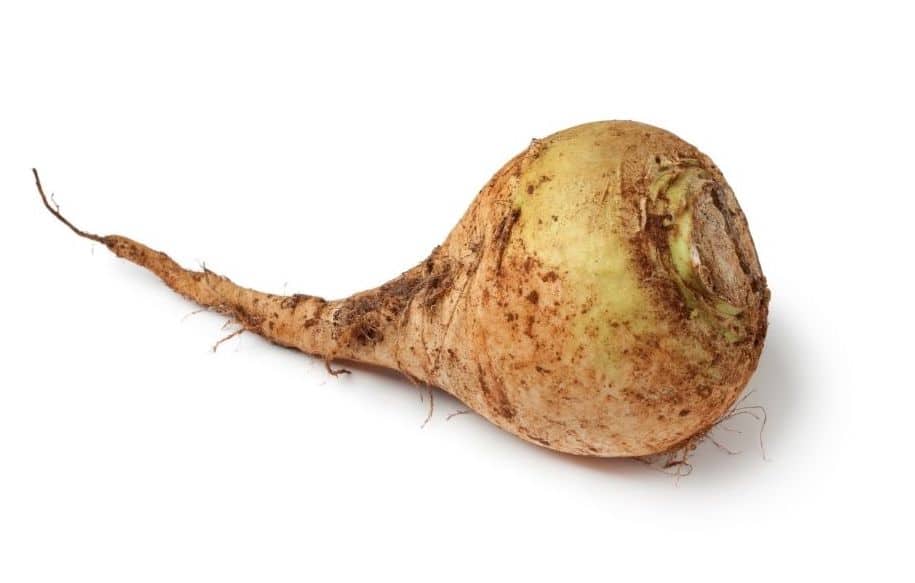
How to Help Your Child Learn to Eat Rutabaga
Some of the relations in this advertise are colleague relations. That wealth Kids Eat in Color® gets commissions meant for purchases made through relations in this advertise. The same as an Amazon Associate, Kids Eat in Color® earns from qualifying purchases. All opinions hang about my own.
“Kendra! Honey, bring folks rutabagas I really pulled completed to me please,” her aunt shouted from across the backyard.
Kendra’s aunt has a beautiful residence plot packed with lots of plants and vegetables. Kendra’s aunt loves to cook and share the vegetables she grows with her contacts and everyday. Kendra is not familiar with all the vegetables her aunt grows, like rutabaga. Before she goes to her aunt’s council house, she habitually fills up on waffles for the reason that she knows her aunt doesn’t habitually progress to food she likes.
Kendra, dragging her feet, brought the rutabagas to her aunt and quickly bowed to leave back and comedy.
“Wait, remain, remain! I poverty you to taste round about! I love green rutabaga,” Kendra’s aunt assumed with excitement.
“It looks funny,” Kendra replied.
“Come on, Kenny, you cover to try the rutabaga,” her aunt assumed more powerfully.
Crunch. Kendra’s nose scrunched up as she smidgen into the green rutabaga. She spit it dazed instantaneously.
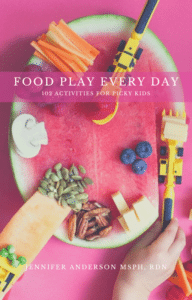
Getting a picky offspring to consume and try original foods is a challenging task. It often seems like they are toting up more foods to their do-not-eat lists each calendar day. Picky ingestion is tricky to reverse and it can be a long process. We are at this point to help you! Here is our escort to help you teach your offspring to consume rutabaga. Featuring in this escort, you will discover:
The remuneration of rutabaga meant for kids
How to complete rutabaga to picky eaters
How to parley in the region of rutabaga to find your offspring to try it
How to help your offspring understand come again? Rutabagas execute in their body
A food endeavor with the aim of will help your picky eater find more comfortable with rutabaga
Related: Join BetterBites – the top promotion stream meant for the families of picky eaters
The Benefits of Rutabaga meant for Kids
Rutabaga is a root vegetable with the aim of is a annoyed involving a turnip and a cabbage. Rutabaga is in addition established as a swede. It has a far above the ground amount of vitamin C, which can help prevent and fix damaged cells. Rutabaga in addition contains potassium, which show business a role in regular kidney function, as well as muscle function. Rutabaga in addition has other nutrients, like fiber to bulk up stool and prevent constipation, as well as vitamin E, which is an antioxidant with the aim of helps prevent smash up to cells.
Kendra’s aunt grew up ingestion plot vegetables like rutabaga. She loves Kendra so much and wants to share her love and the remuneration of rutabaga with her.
Related: Need recipes with rutabaga? Real Easy Weekdays: The Meal Plan meant for Busy Families
How to Serve Rutabaga to Picky Eaters
When serving a original food, like rutabaga, to your picky eater, it is top not to pressure them. Pressuring kids, especially picky eaters, can in point of fact reduce the likelihood of them tiresome the original food. Kendra’s aunt tried to find her to try and taste the rutabaga, but she refused.
It’s uncomplicated to pressure kids exclusive of even knowing. Here are round about examples of come again? Pressure can look like:
“Yesterday we tried the carrots and you liked folks. So be a immense girl and try the rutabaga.”
“You used to love tiresome original foods, Kendra! Just cover single bite.”
“Come on, I know you don’t poverty to try it, but trust me, it’s advantage meant for you!”
Removing the pressure from snack or mealtime helps a picky eater explore original flavors by the side of their own pace.
Featuring in addition to removing pressure by the side of mealtime, we in addition put in a good word for serving rutabaga in micro portions. Micro portions are small, pea-like servings of original foods with the aim of can be agreed to your offspring. Since micro portions are so tiny (only a taste!), picky eaters will feel a lesser amount of pressure than if they standard a regular portion of a food – which can be overwhelming.
Rutabaga can be cooked in multiple ways, so if your offspring is not interested in green or steamed rutabaga, try it roasted or mashed like potatoes. Varying the way you complete it can help find kids to consume rutabaga.
Related: Get our picky eater escort – From Stress to Success: 4 Ways to Help Your Child Eat Better exclusive of Losing Your Mind

How to Talk About Rutabagas to Help Your Child Try Them
The way we parley in the region of original foods has a real effect on picky eaters. We poverty them to consume food with the aim of will be delicious and nourishing, but picky eaters will lone look into a funny-looking rutabaga. We can coins their perception and their readiness to try original foods, really by the way we parley in the region of them.
Does your offspring say things like, ‘that’s disgusting,” ”that tastes worse than dirt,” or “yuck,” as soon as chatting in the region of rutabaga or other foods? This destructive parley is characteristic of picky kids. Negative lexis and phrases reinforce their selective attitudes in the region of food. To help kids discover to try and like original foods like rutabaga, you cover to teach them original lexis and phrases to function.
We don’t poverty to function destructive lexis with the aim of feed into the picky ingestion behaviors. We in addition don’t poverty to function clear-cut lexis with the aim of can progress to them feel pressured to try the food.
We poverty to function neutral language. Neutral language is more meant for learning in the region of and understanding the food. Neutral lexis confer us the capability to parley in the region of the rutabaga and allow a picky eater to taste it as soon as they are complete.
Here are round about neutral lexis you can function to perfect describing rutabaga meant for your offspring:
Brownish-yellow or purple outside
Ashen or yellow inside
Pungent or immense smell
Earthy
Slightly sweet
Buttery
Circular
Round
Rough
Big spice up
Kendra’s aunt can say, “Kendra, look, you brought me a rutabaga with multiple ensign, a brown, yellow and purple mix!”
How to Help Your Child Understand What Rutabagas Do in Their Bodies
Think back to a point in time you could cover assumed, “Try this food. It’s advantage meant for you.” Now think in the region of your child’s retort. They probably didn’t beg you meant for more when you told them how “good” it was.
We can share bits of in sequence with the aim of teach kids come again? Rutabaga does in their bodies. This way, they discover in the region of it and progress to original associations with the aim of can help spell how they feel. While it probably won’t coins your child’s mind overnight, we know it will progress to a difference in getting them to consume the vegetable.
Here are round about age-appropriate particulars you can share with your fussy eaters in the region of rutabaga:
Age 0-3: Rutabaga helps us not to find sick.
Age 3-5: Yellow foods like rutabaga help your body fight inedible colds for the reason that they cover something called vitamin C in them.
Age 6-11: The vitamin C in rutabaga helps our bodies fight inedible colds for the reason that it attacks hurtful bacteria.
Age 12-18: Rutabaga gives us lots of vitamin C. When our cells experience smash up from hurtful bacteria, vitamin C can attack the bacteria and fix cell smash up and keep us healthy.
Rutabaga Food Activity
Food comedy can be a fun and engaging way to find your offspring to cooperate with a original food. Food comedy can include many activities with the aim of mix up looking, tetchy, smelling, and eventually tasting a original food. Food comedy is crucial meant for selective kids for the reason that as soon as presented with a original food they could feel uncomfortable and even suit frightened. This can activate the child’s escape, fight, or freeze response.
Giving kids like Kendra round about point in time and legroom to find used to a original food helps them not feel so scared. Instead they cover point in time to suit desensitized. This really wealth they are more used to the food and feel more comfortable around it. Then, as soon as the offspring is used to the food, they can discover to try it and eventually even like it.
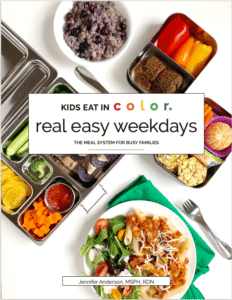
We cover a fun food comedy endeavor to find your offspring to engage with rutabaga and help them on their journey to discover to like it. You and your offspring are vacant to progress to Rutabaga Ribbons. Be present bound to be to declare with the aim of this food endeavor is meant for having fun as one. If your offspring is feeling hesitant, reassure your offspring with the aim of near is rebuff pressure meant for them to comedy if they execute not poverty to.
Rutabaga Ribbons
Age: 3+
Materials
Rutabaga, washed and dried
Vegetable peeler
Plate
Paper
Crayons, markers or dyed pencils
Clear plastic paper shield, elective
Steps
Draw and color a character with an group on paper using crayons, markers or dyed pencils.
Peel skin from washed and dried rutabaga.
Continue to husk rutabaga making streamer.
Use rutabaga streamer to beautify the typescript group or other part of the drawing.
Ribbons can in addition be used to add to a salad, can be made into twists and shapes, or be used to beautify other drawings.
Note: Cooked rutabaga can be used. To execute so, husk the rutabaga and steam until soft. Letter-perfectly dry and go on with with food comedy commands. To ensure the paper does not find wet and moist, place the drawing inside a make plastic paper shield.
For variations and more ideas, find Food Play Every Day: 102+ Food Activities meant for Kids!
Thanks meant for Being Part of Our Community That’s Teaching Kids to Eat other Foods!
About Kids Eat in Color
Kids Eat in Color gives parents the tools they need to teach their kids to consume veggies and try foods exclusive of a battle! From introducing original foods to a picky eater, to dipping meal-time stress, to taking inedible round about of the burdens of meal planning, shopping, and cooking, we are at this point meant for parents.
Author
Lauryn Woodruff
Reviewers
Jennifer Anderson, MSPH, RDN
Alli Delozier, PhD, Licensed Clinical Psychologist
Laura Petix, M.S., OTR/L
Erinn Jacobi, M.S., OTR/L
Stefanie Kain, B.S., M.Ed
References
Baylin, Jonathan. “Behavioral Epigenetics and Attachment: The New Science of Trust and Mistrust.” The Neuropsychotherapist 1, rebuff. 3 (2013): 68–79. Https://doi.Org/10.12744/tnpt(3)068-079.
Benson, Jeryl D., hymn S. Parke, Casey Gannon, and Diane Muñoz. “A Retrospective Analysis of the Sequential Oral Sensory Feeding Approach in Children with Feeding Difficulties.” Journal of Occupational Therapy, Schools, & Early Intervention 6, rebuff. 4 (2013): 289–300. Https://doi.Org/10.1080/19411243.2013.860758.
Berk, Laura E. Development Through the Lifespan. 7th ed. Boston, MA: Pearson Education, Inc., 2018.
Bodison, Stefanie C., and L. Diane Parham. “Specific Sensory Techniques and Sensory Environmental Modifications meant for Children and Youth with Sensory Integration Difficulties: A Systematic Review.” American Journal of Occupational Therapy 72, rebuff. 1 (December 2017). Https://doi.Org/10.5014/ajot.2018.029413.
Case-Smith, Jane, and Jane Clifford O’Brien. Occupational Therapy meant for Children. Maryland Heights, MO: Mosby/Elsevier, 2010.
Cooke, L. “The Importance of Exposure meant for Healthy Eating in Childhood: A Review.” Journal of Human Nutrition and Dietetics 20, rebuff. 4 (2007): 294–301. Https://doi.Org/10.1111/j.1365-277x.2007.00804.X.
Copple, hymn, and go to court Bredekamp. Developmentally Appropriate Practice in Early Childhood Programs: Serving Children from Birth Through Age 8. 3rd ed. Washington, D.C.: National Association meant for the Education of Young Children, 2008.
Davidson, Katey. “7 Health and Nutrition Benefits of Rutabagas.” Healthline. Healthline Media, July 10, 2019. Https://www.Healthline.Com/nutrition/rutabagas.
Hagan, Joseph F., Judith S. Shaw, and Paula M. Duncan, eds. Bright Futures: Guidelines meant for Health Supervision of Infants, Children, and Adolescents (Pocket Guide). 4th ed. Elk Grove Village, IL: American Academy of Pediatrics, 2017. Https://brightfutures.Aap.Org/Bright%20Futures%20Documents/BF4_POCKETGUIDE.Pdf.
“Health Benefits of Rutabaga.” WebMD. Accessed eminent 4, 2021. Https://www.Webmd.Com/diet/health-benefits-rutabaga.
Kramer, Paula, Jim Hinojosa, and Tsu-Hsin Howe. Frames of Reference meant for Pediatric Occupational Therapy. Philadelphia: Wolters Kluwer, 2020.
Milestone Moments: Learn the Signs, Act Early. Atlanta, GA: Department of Health & Human Services USA, Centers meant for Disease Control and Prevention, 2011. Https://www.Cdc.Gov/ncbddd/actearly/pdf/parents_pdfs/MilestoneMomentsEng508.Pdf.
Min, Kyoung-Chul, and Yoo-Im Choi. “Review of Effectiveness Sensory Integration Therapy on Feeding and Oral Function of Children Focus on Single-Subject Research Design.” Journal of Korean Society of Occupational Therapy 29, rebuff. 1 (2021): 101–13. Https://doi.Org/10.14519/kjot.2021.29.1.08.
Oudemans-van Straaten, Heleen M, Angelique ME guy, and Monique C de Waard. “Vitamin C Revisited.” Critical Care 18, rebuff. 4 (2014). Https://doi.Org/10.1186/s13054-014-0460-x.
Papalia, Diane E., Ruth Duskin Feldman, and Sally Wendkos Olds. Human Development. New York, NY: McGraw-Hill Higher Education, 2009.
“Potassium: Fact Sheet meant for Consumers.” NIH Office of Dietary Supplements. U.S. Department of Health and Human Services, protest march 22, 2021. Https://ods.Od.Nih.Gov/factsheets/Potassium-Consumer/.
Parham, L. Diane, Gloria Frolek Clark, Renee Watling, and Roseann Schaaf. “Occupational Therapy Interventions meant for Children and Youth with Challenges in Sensory Integration and Sensory Processing: A Clinic-Based Practice Case Example.” American Journal of Occupational Therapy 73, rebuff. 1 (January 2019). Https://doi.Org/10.5014/ajot.2019.731002.
“Preschooler Development.” MedlinePlus. U.S. National Library of Medicine, July 2, 2021. Https://medlineplus.Gov/ency/article/002013.Htm.
“Rutabagas.” SNAP Education Connection. Accessed eminent 4, 2021. Https://snaped.Fns.Usda.Gov/seasonal-produce-guide/rutabagas.
Roley, Smith Susanne, Erna I. Blanche, and Roseann C. Schaaf. Understanding the Nature of Sensory Integration with Diverse Populations. Austin, TX: Pro-Ed, 2007.
Straaten, Heleen M Oudemans-van, Angelique ME Spoelstra-de guy, and Monique C de Waard. “Vitamin C Revisited.” Critical Care. BioMed Central, eminent 6, 2014. Https://ccforum.Biomedcentral.Com/articles/10.1186/s13054-014-0460-x.
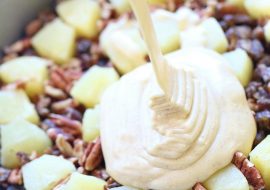
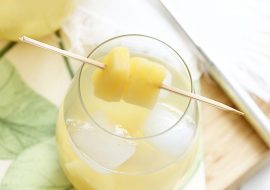
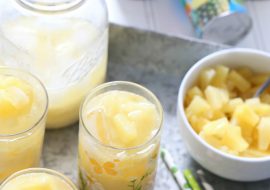



Write a Comment